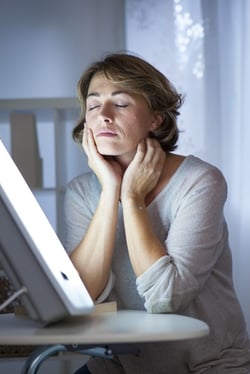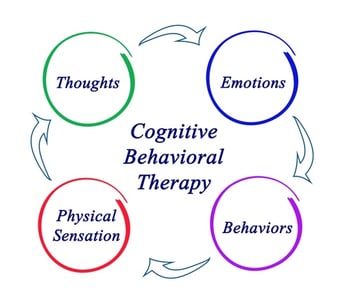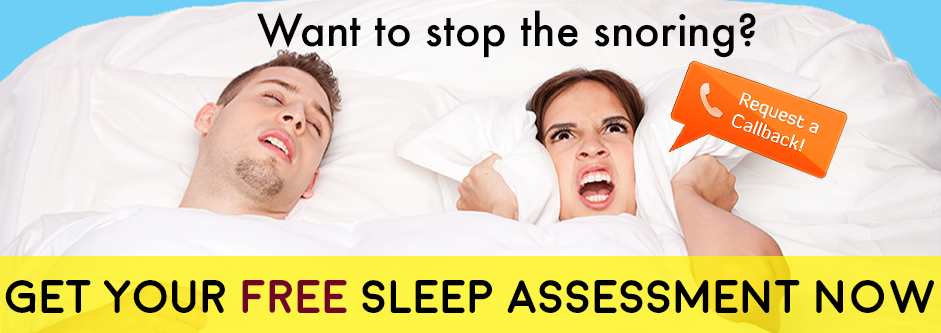 December 21 of this year marks the Winter Solstice—the beginning of winter in the Northern Hemisphere. Because of the position of the earth in relation to the sun, the days are shorter and, as a result, less light is available. Many people suffer from the winter blues or winter depression, more officially called Seasonal Affective Disorder (SAD), as a result of this reduced light. There are things you can do to make yourself feel better, however.SAD is classified as a depression that occurs at certain times of the year, during particular seasons. About 6 percent of the population suffers from SAD, with the percentage depending upon their location—1.4 percent of Florida residents suffer with SAD, compared to 9.9 percent in Alaska.
December 21 of this year marks the Winter Solstice—the beginning of winter in the Northern Hemisphere. Because of the position of the earth in relation to the sun, the days are shorter and, as a result, less light is available. Many people suffer from the winter blues or winter depression, more officially called Seasonal Affective Disorder (SAD), as a result of this reduced light. There are things you can do to make yourself feel better, however.SAD is classified as a depression that occurs at certain times of the year, during particular seasons. About 6 percent of the population suffers from SAD, with the percentage depending upon their location—1.4 percent of Florida residents suffer with SAD, compared to 9.9 percent in Alaska.
SAD can cause lethargy, sleeping too much, poor quality sleep, body aches, weight gain, trouble concentrating, irritability, and other symptoms common to other types of depression.
Simple Tips and Tricks to Deal with SAD
The following simple tips and tricks help individuals cope with the winter blues.
Keep Active
 Because SAD is caused by a lack of light, being exposed to more natural light during the winter will relieve those winter blues.
Because SAD is caused by a lack of light, being exposed to more natural light during the winter will relieve those winter blues.
Exercising outside during the day will give you not only the benefit of the additional natural light, but the exercise will eliminate toxins and give your body a physical enery boost as well.
Use a Heliostat
To bring more light into your home, consider using a heliostat. This computer-controlled device reflects sunlight into the windows. The usual configuration contains a mirror, a motor or mechanism to move the mirror, and a sun tracking system. The heliostat senses the sun, finds its location in relation to the house location, and adjusts itself as the sun moves across the sky. The mirror maintains sunlight in one spot throughout the day.
Eat Healthy
 Eating vegetables and fruits as part of a healthy diet provides many health benefits. The nutrients in vegetables and fruits are vital for health and maintenance of your body.
Eating vegetables and fruits as part of a healthy diet provides many health benefits. The nutrients in vegetables and fruits are vital for health and maintenance of your body.
Vegetables and fruits reduce the risk of some chronic diseases. Eating a diet rich in vegetables may reduce risk for stroke, cancer, heart diseases and type-2 diabetes.
- Fruits and vegetables are rich in vitamins and minerals, provide a natural boost in energy and mood, and help the body work at peak performance.
Engage with Others
Visiting with friends and having a good time will help prop you up. Other activities you might engage in to raise yourself above the blues include spending time with other people or animals, such as volunteering at a non-profit organization to help other people or animals.
 Joining an online support group (here’s one link: https://seasonal-affective-disorder.supportgroups.com/) or a support group that meets in person can especially be helpful.
Joining an online support group (here’s one link: https://seasonal-affective-disorder.supportgroups.com/) or a support group that meets in person can especially be helpful.
Both types of groups will reduce your feeling of being alone, and will offer a safe place with similarly-situated people to share your feelings.
Hobbies
Another way of keeping yourself from being stuck in your own head is to get a new hobby. Doing something you have an interest in will take your focus off what you don’t have and will place it on learning and experiencing something new.
Laugh
 Laugh your blues away by watching funny shows or being around funny people.
Laugh your blues away by watching funny shows or being around funny people.
Norman Cousins, Adjunct Professor of Medical Humanities for the School of Medicine at UCLA, engaged in belly laughter to cure a life-threatening illness he was suffering from.
Joining a laughter group may be beneficial for your SAD and overall health. Many hospitals have laughter therapy groups for their patients and for the public. Laughter has been found to be a great way to lift your mood, stimulate your respiratory system and core muscles, feel empowered and connect with others.
Medical Treatment for SAD
If all the above things fail to raise your mood, seek professional help. Seasonal Affective Disorder is not an uncommon malady, and treatment can include light therapy, pharmaceutical assistance, and counseling.
Light Therapy
Light therapy is the preferred medical treatment for SAD. Getting optimum benefits from light therapy depends upon getting the proper amount of light exposure, at the best time of day for the individual, and at the proper wattage. Because of these factors, it is recommended that you use light therapy in conjunction with your physician’s instruction.
 It is believed that light therapy works because the light wakes up your brain (making you feel more alert and awake) and increases the amount of serotonin in the brain (raising your mood).
It is believed that light therapy works because the light wakes up your brain (making you feel more alert and awake) and increases the amount of serotonin in the brain (raising your mood).
Melatonin is known as the hormone of darkness and causes sleepiness. It is released by the brain when the outside natural light is low. When exposed to light therapy, melatonin levels are reduced in the brain.
Light therapy uses a lightbox that emits a much larger number of lumens than an ordinary lightbulb. A 100 watt incandescent bulb emits 1,600 lumens. Light therapy uses bright white full spectrum light at 10,000 lumens.
Oregon Health & Science University recommends “cool white” fluorescent lamps because they contain less ultraviolet radiation, which may cause harm.
About 50 percent of people who use light therapy to relieve SAD find benefit from it. In one study, 69 percent of patients found light therapy treatment to be inconvenient and as many as 19 percent stopped using it.
Dawn Simulation
Dawn simulation is another type of light therapy which is preferred by many people. In one study, there was an 83 percent better response to dawn simulation when compared to other bright light therapy. This device shines a dim light in the room around dawn while you are sleeping and the light increases in intensity, simulating the sunrise.
Negative Air Ionization
A negative air ionization device releases charged particles into the sleep environment, and has been found effective at reducing SAD symptoms. One study found a 47.9 percent improvement in mood when the negative ions were in the high level.
This small, silent device produces high electron flow rate that charges air particles but is undetectable by the human senses. In a study in the Journal of Psychiatry, those who used a negative air ionization device responded as well as those who used light therapy.
Counseling/Cognitive Behavioral Therapy
Professional counseling with a trained counselor or therapist allows those with SAD to express feelings that may be too difficult to express to friends or family. Or your feelings may be about friends and family. Counselors strive to provide a safe environment for clients to deal with inner conflict and resolve issues in a timely and permanent fashion.
 According to Dr. Ben Martin, cognitive behavioral therapy (CBT) is a short-term, goal-oriented psychotherapy treatment that takes a hands-on, practical approach to problem-solving. Its goal is to change patterns of thinking or behavior that are behind people's difficulties, and so change the way they feel.
According to Dr. Ben Martin, cognitive behavioral therapy (CBT) is a short-term, goal-oriented psychotherapy treatment that takes a hands-on, practical approach to problem-solving. Its goal is to change patterns of thinking or behavior that are behind people's difficulties, and so change the way they feel.
CBT is an excellent therapy for depression, insomnia, and psychological problems. Therapy lasts on average five to 10 months, and teaches the patient how to use CBT principles to deal with problems that arise in the patient’s life.
Pharmaceuticals
Anti-depressants are sometimes prescribed to treat severe cases of SAD. Since it takes up to six weeks for anti-depressants to become fully effective in the bloodstream, it is best to begin anti-depressants at the beginning of the winter season before symptoms appear. In that way, the drug will be effective when the low light of winter covers the earth. Selective serotonin reuptake inhibitors (SSRIs) are the preferred anti-depressant for SAD. The more serotonin that remains in the bloodstream, the more the probability of enhanced mood. Studies found the best SSRIs for SAD treatment are fluoxetine, sertraline and orparoxetine.
Summary
Seasonal Affective Disorder is a type of depression which occurs periodically with seasonal changes. There are various treatment plans, from simple behavior and lifestyle changes to prescription use, you can employ to relieve your SAD symptoms. Taking a proactive response to SAD will reduce your seasonal suffering and make your life more enjoyable.
Sources:
www.apa.org
http://psychcentral.com/lib/in-depth-cognitive-behavioral-therapy/
Holen-Hoeksema, Abnormal Psychology, McGraw-Hill Education, New York.
U.S. Department of Agriculture. ChooseMyPlate.gov
Lam, The Can-SAD Study: A Randomized Controlled Trial of the Effectiveness of Light Therapy and Fluoxetine in Patients with Winter Seasonal Affective Disorder, American Journal of Psychiatry, 163(5): 805-812.
Avery, Dawn simulation and bright light in the treatment of SAD, Biological Psychiatry, 50(3): 205-216.
M.Terman, Controlled Trial of Naturalistic Dawn Simulation and negative Air Ionization for Seasonal Affective Disorder, American Journal of Psychiatry, 163(12): 2126-33.
Saeeduddin, Phase Response Curve of Low-Intensity Green Light in Winter Depressives, Sleep Research, 24:508.
Strong, Narrow-band blue-light treatment of seasonal affective disorder in adults and the influence of additional nonseasonal symptoms, Depression and Anxiety, 26(3): 273-278.
Osborn, Seasonal Affective Disorder, Grief Reaction, and Adjustment Disorder, Medical Clinics of North America, 98(5): 1065-1077.
Moscovitch, Collaborative Group on Sertraline in the Treatment of Outpatients with Seasonal Affective Disorders, Psychopharmacology, 171(4): 390-397.
Image Source:
www.shutterstock.com









Leave a comment